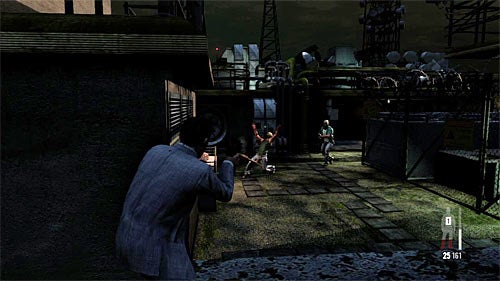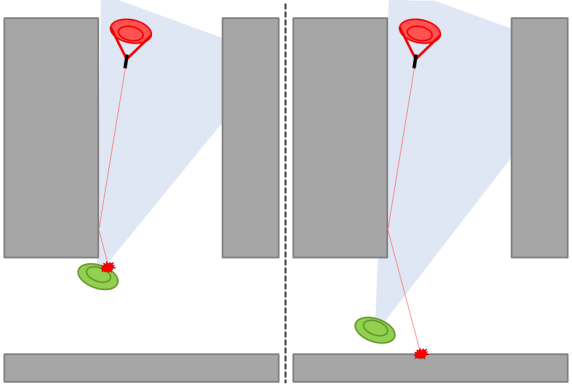Webster defines ricochet as a glancing rebound of a projectile off a flat surface. It is quite common physical effect observed by most of regular shooters. It can be deadly if not accounted for (thus a popular firearm safety rule – Never shoot at a flat, hard surface). It also can save your life if you know how to use it to your advantage.
Although the ricochet happens mostly off hard surfaces like concrete or steel, it is not uncommon to see a projectile bouncing off a car’s windshield or even water. The softer the surface, the more obtuse should be the angle of the bullet hitting it to ricochet.
Contrary to the intuition, the angle the projectile leaves the surface usually does not match the angle it hits it. The leaving angle is difficult to predict. It depends on the variety of factors, such as the hardness of the material and the projectile, the angle of impact, and the damage to the projectile. It is not unheard of for a bullet to bounce off a metal plate straight back at the shooter (video).
For a typical self-defense or a target-shooting situation though, many of those parameters are similar and statistically the ricochet angle falls in the range of 10-20 degrees for a wide range of the impact angle. It can be easily observed when shooting steel plates – after 30-50 rounds there will be a line formed by bullet pieces approximately 10-20 degrees in front of the plate.
The danger of ricochet
Ricochet off a backstop
You all know the rule #1 of gun safety – Always keep the gun pointed to a safe direction (and if you do not, you should!) Every time you handle a firearm, either while cleaning at home, or during a practice session at the range, you need to identify where the safe direction at this place is. When you do it, you should take ricochet in account.
Thus, pointing a gun down at the concrete floor inside the range can be as unsafe as plainly muzzling people’s feet. Using a fireplace wall in your house might not be a good idea if you have a door or a window nearby. A bookcase full of books or a large plant pot might be a safer choice.
Ricochet off a cover
In case of a self-defense, one of the first actions you need to do is to find a safe cover. It is the smartest thing you can do, if you execute it correctly. Unfortunately, Hollywood and video game industry have created completely wrong image of how it should be done.

Screenshot from Max Payne 3
In a typical movie or a video game people hide behind building corners, cars, or other obstacles and they try to be as close as possible to it, just peeking out of it with one eye. That’s where the danger lies. Any shot made by the attacker hitting the wall in front of them (which is much easier to do comparing to hitting a partially hidden silhouette behind a cover) will ricochet into their face.
The solution is simple – stand as far from the cover as you can without compromising your visibility and protection. It will give a greater chance for a ricocheted bullet to fly by without hitting you.

Standing close and far from the corner
It works both ways. If your attacker positioned himself close to the cover, and the surface or the ground in front of him is hard, you can use it to your advantage. A shot just in front of him has a good chance of ricocheting to his face or feet.
Ricochet off the ground
If you have been shot at in the middle of an empty parking lot, sometimes the only thing you can do is to fall down on the ground. If the surface of the parking lot is hard enough you can get killed by a ricochet as easily as by a direct shot. In this situation, even a low-height curbstone can be a good protection. While it won’t be able to cover you completely and protect from a direct shot, it will save you from the shrapnel ricocheting off the ground from the shots hitting in front of you.
Conclusion
Ricochet is not uncommon and can be deadly if not accounted for. Always consider it when choosing a safe backstop any time you handle a firearm. In a self-defense situation, try standing as far from a cover as possible without compromising it – it will help you to avoid ricochets. It can also be used to your advantage if your attacker does not follow the same practice.
Image by njaj.
David Kizhnerman is a certified NRA instructor and author of the simplyaboutguns.com blog, dedicated to popularizing firearm education, improving shooting skills, and other firearm related topics.
 Your Privacy Choices
Your Privacy Choices
